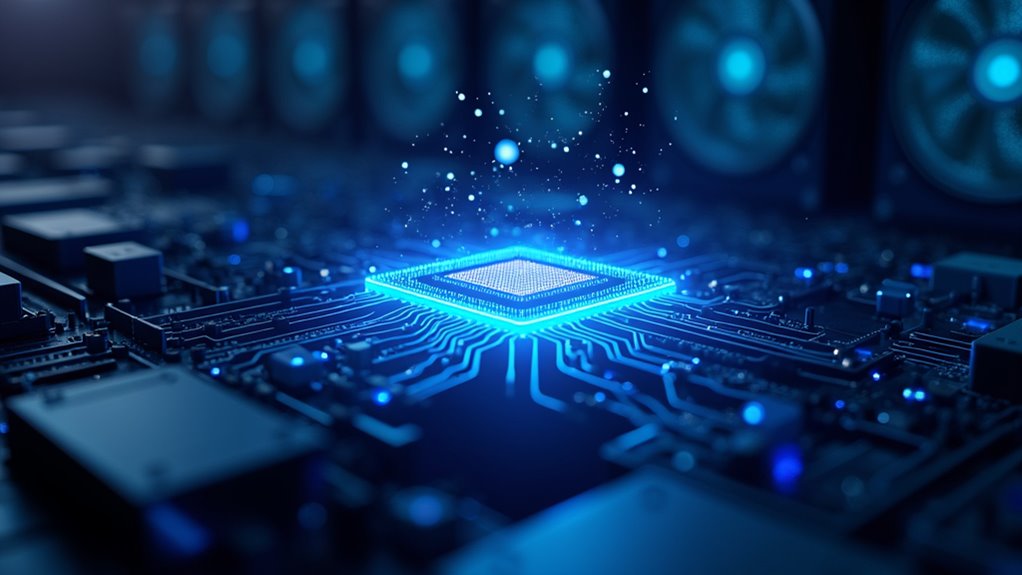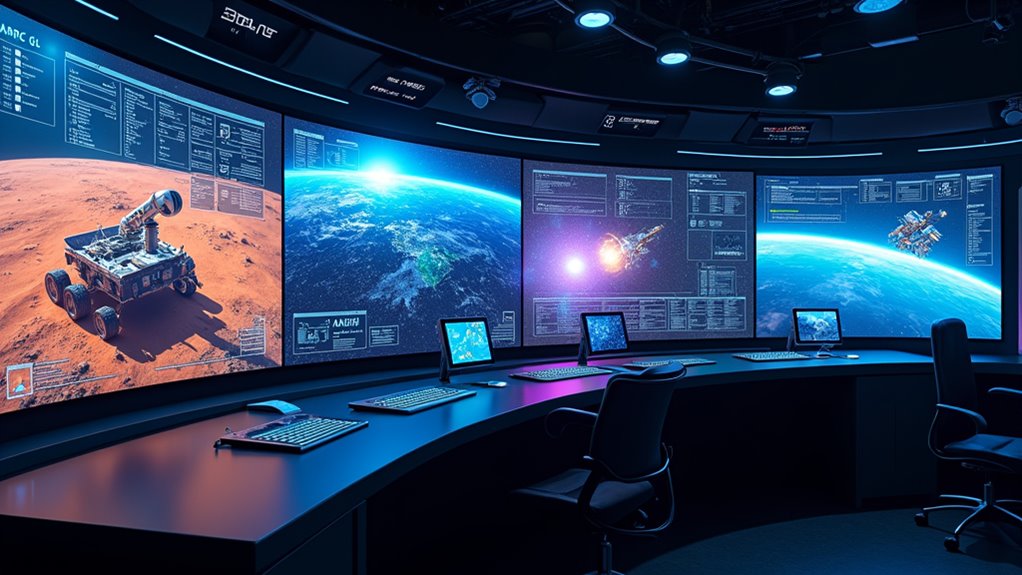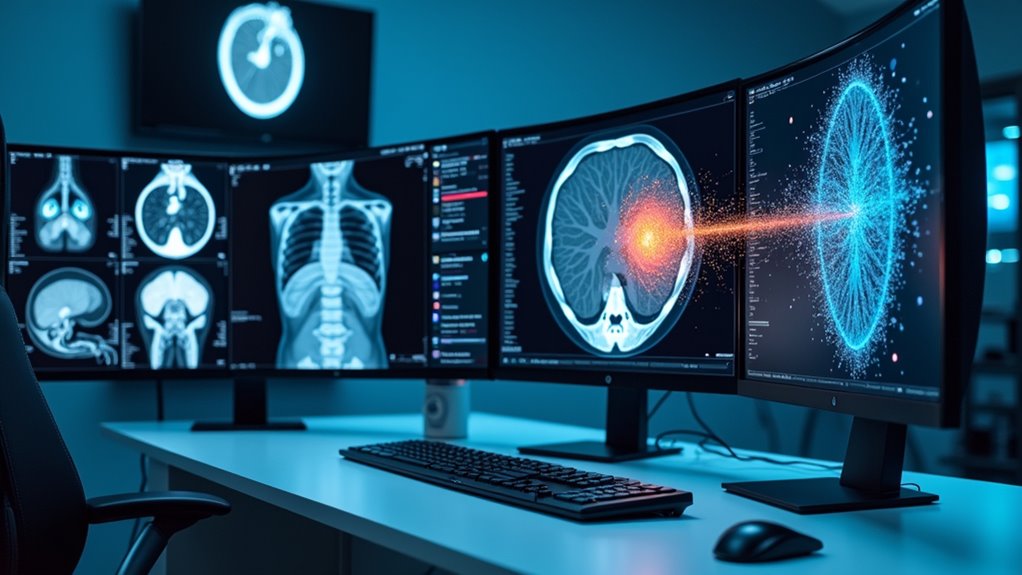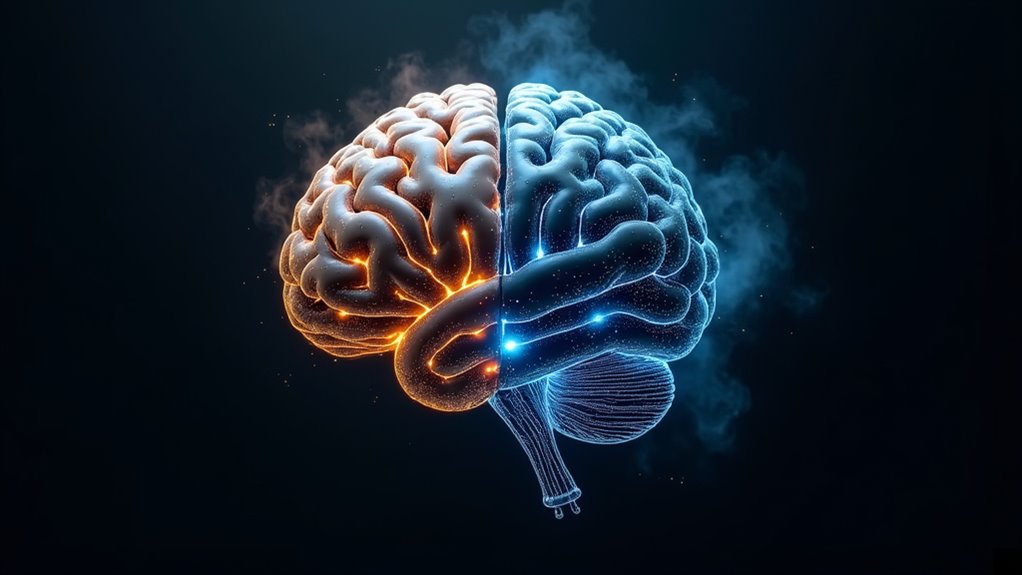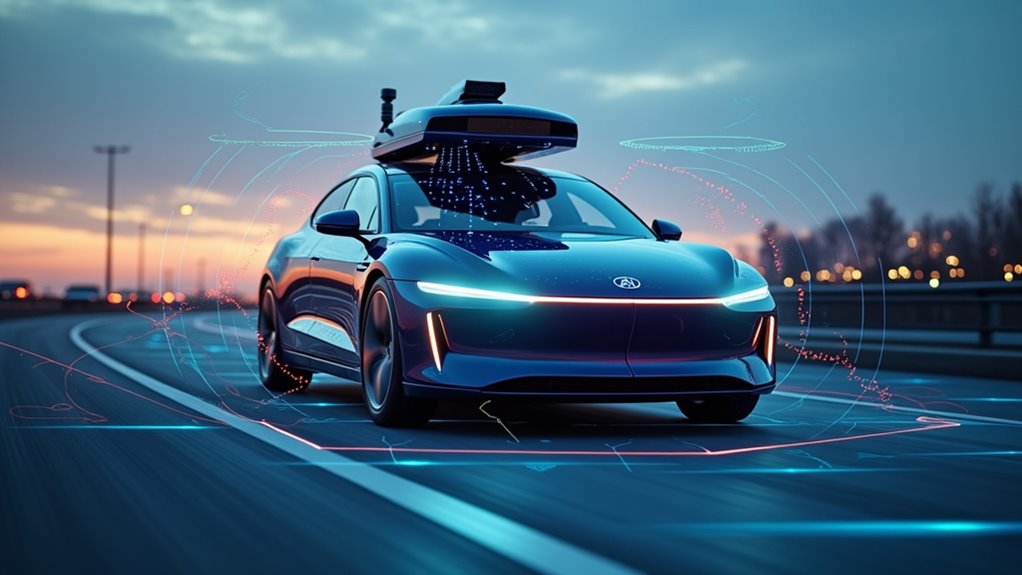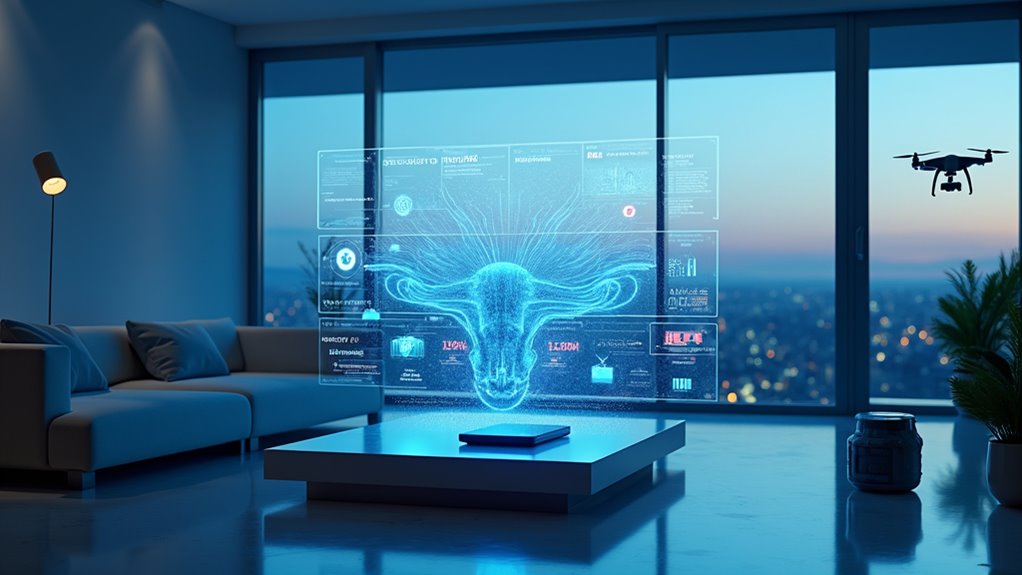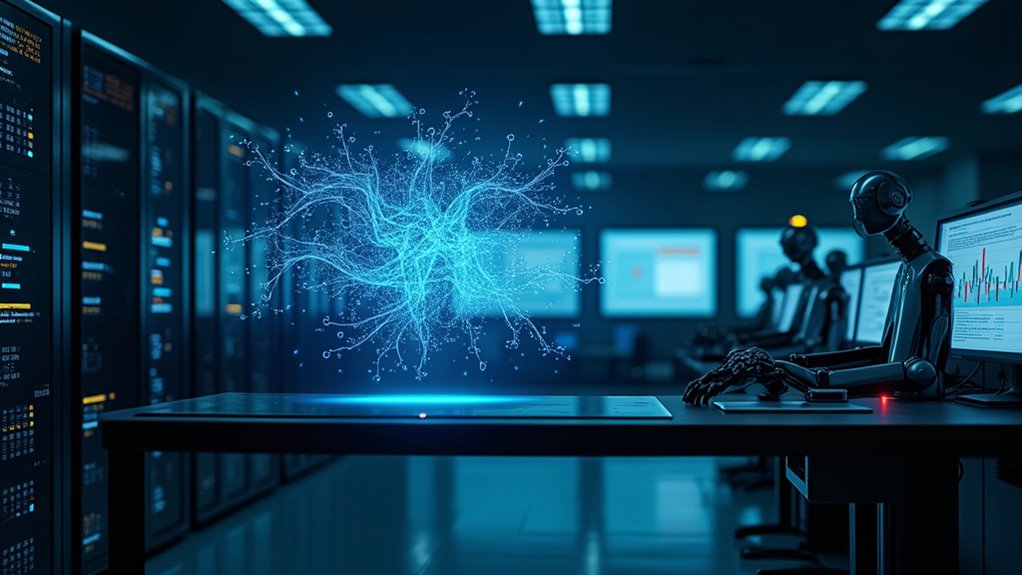Quantum AI fuses quantum computing with artificial intelligence, creating a computational powerhouse that makes today’s fastest computers look like pocket calculators. Unlike traditional binary systems stuck with ones and zeros, quantum computers process multiple states simultaneously – think solving a thousand puzzles at once. This emerging technology is projected to revolutionize everything from healthcare to finance, though building these systems is like babysitting temperamental ice cream in a desert. The quantum computing revolution is just warming up.
The marriage of quantum computing and artificial intelligence is no longer science fiction – it’s happening right now. Scientists and tech giants are diving headfirst into Quantum AI, a groundbreaking fusion that’s about to turn the computing world upside down. It’s like giving AI a supercharged espresso shot, enabling it to process massive amounts of data at mind-boggling speeds.
Let’s get real for a second. Traditional computers work with basic ones and zeros. Boring, right? But quantum computers? They’re the cool kids on the block, using quantum mechanics principles like superposition and entanglement to process multiple states simultaneously. It’s like having a computer that can be everywhere and nowhere at once – totally mind-bending stuff. With experts projecting the market to hit 300 million USD by 2033, this technology is clearly here to stay.
Wave goodbye to simple binary – quantum computing juggles infinite possibilities while your laptop is still counting on its fingers.
The implications are massive, and not just for tech nerds. Think about healthcare breakthroughs, financial predictions that actually make sense, and logistics systems that don’t make you want to pull your hair out. Quantum AI could crack problems that regular computers would take centuries to solve. And yes, it might even lead to artificial general intelligence – though let’s not get ahead of ourselves.
But here’s the catch (there’s always a catch). Building quantum computers is like trying to keep an ice cream cone from melting in the Sahara. These machines are incredibly sensitive to noise and errors, requiring more babysitting than a room full of toddlers. Efficient resource management will be crucial as these systems demand enormous power and cooling requirements. They need massive amounts of power and cooling, and the hardware challenges are enough to give engineers nightmares.
Despite these hurdles, Quantum AI is pushing forward with technologies like Quantum Neural Networks and hybrid quantum-classical models. These systems are already showing promise in pattern recognition and data security.
Sure, we’re still in the early stages, but the potential is undeniable. It’s like watching the dawn of the internet all over again – except this time, we’re dealing with quantum mechanics instead of dial-up modems. The future of computing isn’t just coming; it’s already here, wearing a quantum mechanics bow tie and doing computational cartwheels.
